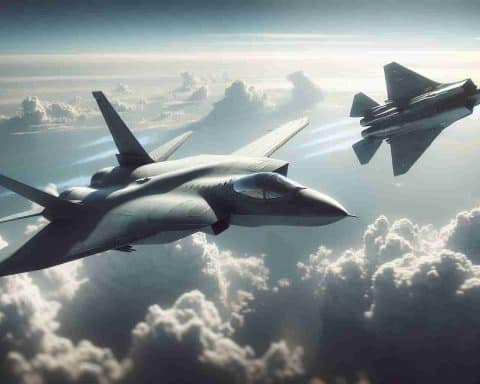Romania has taken a significant step forward in modernizing its military capabilities by sealing a deal to acquire 32 cutting-edge F-35 fighter jets from the United States.
On November 15, 2024, the Romanian President, Klaus Iohannis, greenlit this acquisition, marking a historic investment in the nation’s defense strategy. The deal, valued at over $6 billion, will be financed through Romania’s Ministry of Defense budget, loans, or credit guarantees, potentially provided by the U.S. government.
What’s Included in the $6 Billion Deal?
This extensive contract is not just about purchasing aircraft. It encompasses a full package that includes engines, ammunition, and initial logistical support. Romania will also benefit from comprehensive crew training programs and the acquisition of essential cryptographic equipment.
Additionally, the agreement promises industrial cooperation projects. These initiatives will facilitate technology transfer, enhancing Romania’s own defense manufacturing capabilities.
By securing the F-35s, Romania is positioning itself strategically in the region with a significant bolster to its national defense. This move is seen as a critical enhancement of the country’s military readiness and an important symbol of the deepening ties between Romania and the United States.
As the deal progresses, Romania looks to strengthen its defense industry and maintain regional security, ushering in a new era of military prowess.
The Future of Military Aviation: How Romania’s F-35 Deal Could Change the Game
Romania’s purchase of 32 state-of-the-art F-35 fighter jets symbolizes a pivotal moment for its military and could herald significant technological advancements and strategic shifts across Europe and beyond. While the immediate implications center on bolstering national defense, the ramifications extend into various sectors, potentially influencing global military dynamics and technological innovation.
Technology Transfer and Industrial Growth
One intriguing aspect of Romania’s deal is the promise of industrial cooperation projects. This move is not merely about bolstering military might; it’s a gateway to technological collaboration, which could serve as a catalyst for local industry growth. Through these projects, Romania could enhance its own defense manufacturing capabilities, leading to the development of advanced technologies locally. These projects could nurture a robust defense sector, generate jobs, and boost technological expertise within the region.
Advantages of F-35 Acquisition Beyond Defense
Beyond strengthening military defense, this acquisition positions Romania at the forefront of technological advancement. The F-35 fighter jet is not just a combat vehicle; it embodies cutting-edge technology with sophisticated radar, electronic warfare, and network capabilities. Integrating these technologies could foster innovations in civilian sectors such as aeronautics, cybersecurity, and communications, greatly affecting Romania’s technological landscape.
The Controversies Surrounding Military Modernization
Despite its potential benefits, the deal raises controversies, especially concerning the allocation of resources. Critics argue that the vast expenditure could be directed towards pressing domestic issues such as healthcare, education, or infrastructure improvements. Additionally, the military expansion could escalate regional arms races, prompting neighboring countries to enhance their own military capabilities, which might increase geopolitical tensions.
Strategic and Political Ramifications
As Romania deepens its military ties with the United States, questions arise regarding the political implications. Will this move cement Romania’s position as a key ally in NATO, or could it strain relationships with other regional powers? The answer may depend on future diplomatic engagements and how other international players react to this shift in military alignment.
Future Prospects for Global Military Technology
By embracing advanced technology through the F-35 acquisition, Romania could play a pivotal role in shaping future military strategies and collaborations across Europe. This development serves as a reminder of how military advancements often spearhead technological progress that spills over into civilian applications.
To explore more on military advancements and their implications, you can check out defense.gov, a reliable resource for defense-related information.
Final Thoughts
As Romania embarks on this ambitious road, the world watches to see how this military modernization will unravel its layers of potential and challenges. The F-35 acquisition is not merely an investment in aircraft; it’s a venture into a realm of technological evolution and strategic transformation.
This development compels us to ask: How will current defense strategies mold the future of global technology, and what responsibilities come with wielding such power?






















